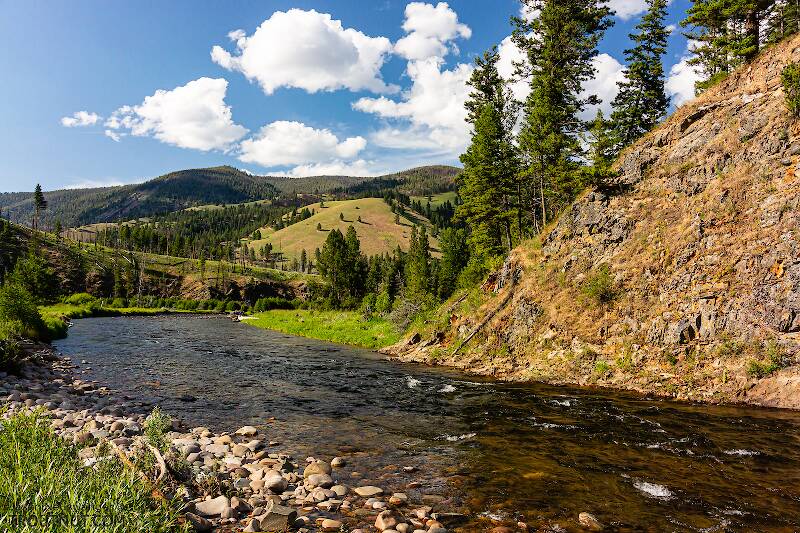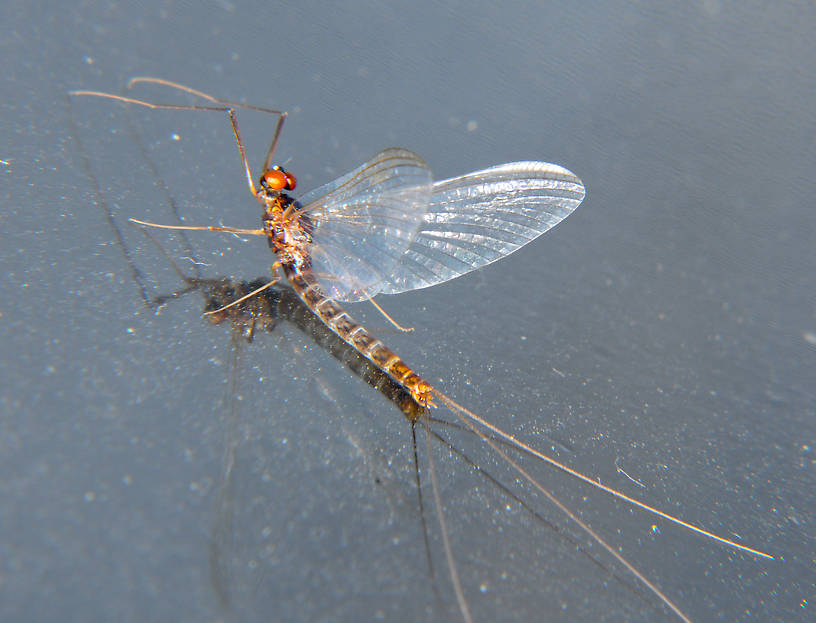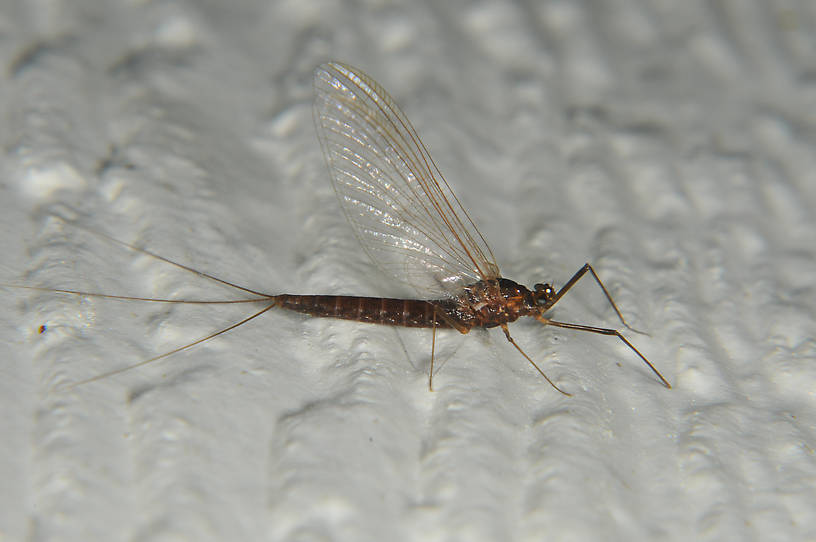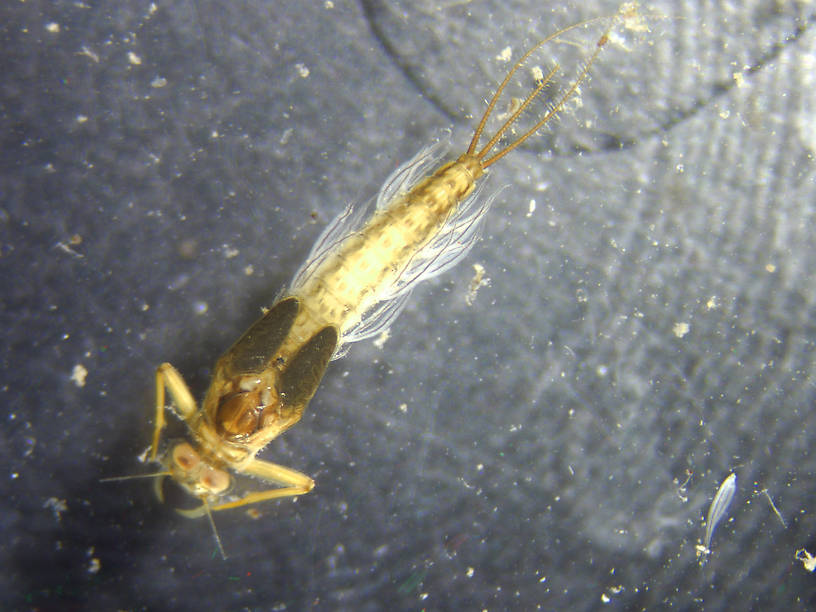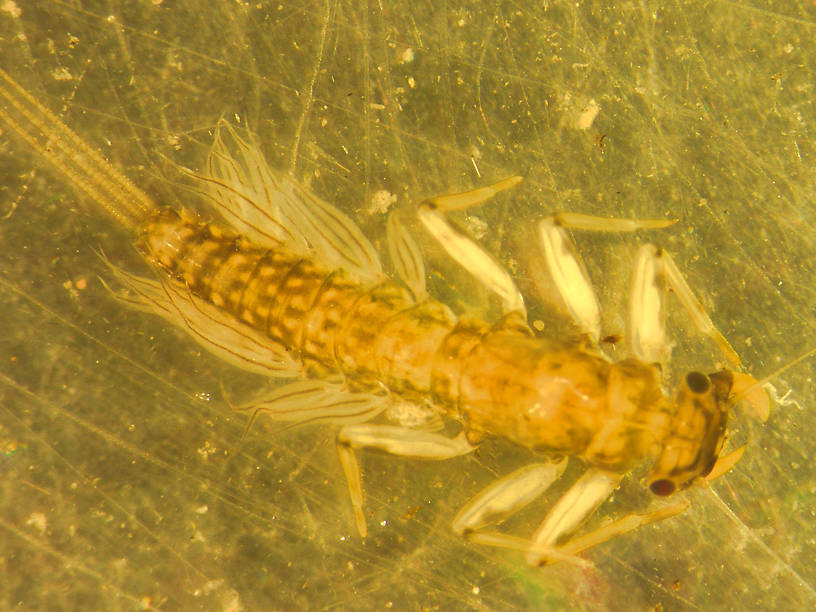
Salmonflies
Pteronarcys californica
The giant Salmonflies of the Western mountains are legendary for their proclivity to elicit consistent dry-fly action and ferocious strikes.


Mayfly Species Paraleptophlebia bicornuta (Mahogany Duns)
P. bicornuta is often reinforced by simultaneous hatches of the more common Paraleptophlebia debilis. The two duns appear virtually identical to the naked eye, though bicornuta usually has an edge in size.
Paraleptophlebia bicornuta is by far the widest distributed tusked species, though there are others. Telling the tusked species apart is very difficult and even entomological texts are largely ambiguous on the characters that differentiate them. Distribution records are probably the most reliable way for anglers to know with any probability what they are looking at. Check out the Paraleptophlebia packii and Paraleptophlebia helena hatch pages for more distribution information.
Where & when
Time of year : September through early November
In 5 records from GBIF, adults of this species have been collected during October (40%), August (20%), June (20%), and September (20%).
Species Range
Physical description
Most physical descriptions on Troutnut are direct or slightly edited quotes from the original scientific sources describing or updating the species, although there may be errors in copying them to this website. Such descriptions aren't always definitive, because species often turn out to be more variable than the original describers observed. In some cases, only a single specimen was described! However, they are useful starting points.
Male Spinner
Wing length: 10 mm
This is a species with almost as much brown as white on the middle abdominal segments. Head and thorax blackish brown above, a little paler on the sides and beneath. Fore legs brown with paler tarsi; middle and hind legs paler beyond the brown femora. Wings hyaline with brown longitudinal veins; costal cross veins obsolete except in the stigmatic area where they are numerous, long, strongly aslant and sometimes forked.
Abdomen dark brown on the first segment above, lighter on the second, and reddish brown on segments 8 to 10; 3 to 7 whitish with brownish cloud on the posterior half of the dorsum of each. A black dot on the stigma and a diffuse roundish, brown spot above it. Mid-ventral areas also faintly tinged with brown, especially segment 7. Sternite 1 wholly brown; 8 and posterior half of 9 a bright reddish brown. The basal joint of the forceps is brown; the distal joints are white; at the base of the former is a conspicuous lobe above, similar to that in Paraleptophlebia debilis. Penes broadly separated by a very wide U-shaped notch; dilated and truncate at tips and bearing just before the tips on the dorsal side a pair of long flat lobes that converge by their rounded ends within the U-shaped cleft. Reflexed spur bifid, almost crescentic in form, attached by the back of this crescent; the outer horn longer (see fig. 135). Tails pale brown.
Specimens of the Mayfly Species Paraleptophlebia bicornuta
1 Male Dun
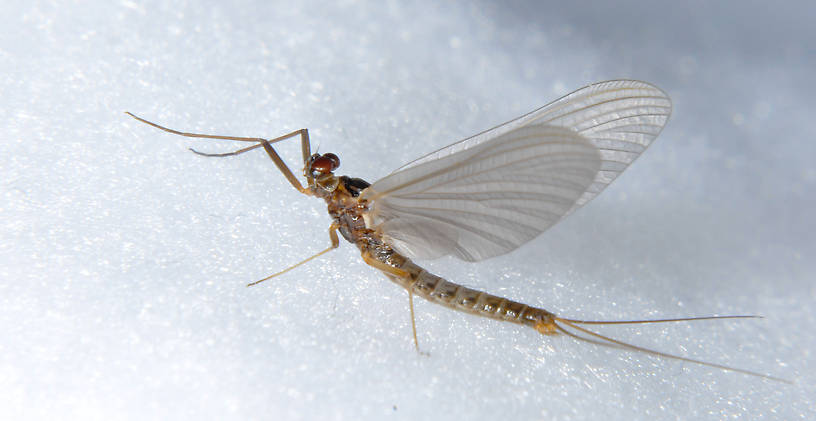
1 Male Spinner
1 Female Spinner
2 Nymphs
Start a Discussion of Paraleptophlebia bicornuta
References
- Arbona, Fred Jr. 1989. Mayflies, the Angler, and the Trout. Nick Lyons Books.
- Caucci, Al and Nastasi, Bob. 2004. Hatches II. The Lyons Press.
- Jacobus, L. M., Wiersema, N.A., and Webb, J.M. 2014. Identification of Far Northern and Western North American Mayfly Larvae (Insecta: Ephemeroptera), North of Mexico; Version 2. Joint Aquatic Science meeting, Portland, OR. Unpublished workshop manual. 1-176.
- Knopp, Malcolm and Robert Cormier. 1997. Mayflies: An Angler's Study of Trout Water Ephemeroptera . The Lyons Press.
- Merritt R.W., Cummins, K.W., and Berg, M.B. 2019. An Introduction to the Aquatic Insects of North America (Fifth Edition). Kendall/Hunt Publishing Company.
- Needham, James G., Jay R. Traver, and Yin-Chi Hsu. 1935. The Biology of Mayflies. Comstock Publishing Company, Inc.
Mayfly Species Paraleptophlebia bicornuta (Mahogany Duns)
Species Range
Common Names
Resources
- NatureServe
- Integrated Taxonomic Information System
- Global Biodiversity Information Facility
- Described by McDunnough (1926)

